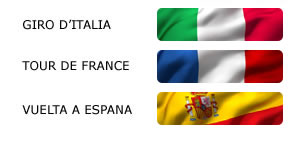
In recent days, even on this site, news was given that the final stage of the Tour de France concluding at the Champs-Élysées will also propose the spectacular passage through Montmartre, as happened during the Paris Olympics of 2024. A passage characterized by two dense crowds in a section with iconic views of the French capital.
The first time the Tour concluded in the heart of Paris was in 1975, with the arrival at the Champs-Élysées, a solution always preserved over the years, along the spectacular boulevards with a circuit that runs alongside architecturally and historically significant buildings, a destination for universal tourism.
It was the first Tour won by Frenchman Bernard Thévenet with Eddy Merckx in second place and his compatriot, the climber Lucien Van Impe, on the third step of the podium. It was also the last Tour podium for Eddy Merckx, winner of five Tours of France. The stage winner, entirely on a circuit in the French capital, was another Belgian, the powerful rouleur-sprinter Walter Godefroot.
Before that, the great French race had concluded in velodromes and sports facilities in the Paris area, except for the recent history of 2024, which had Nice as the final destination due to the concomitance with the Olympics.
Until 1967, the Grande Boucle concluded on the track of Parc des Princes colored pink, a track of 454 meters, and then, from 1968 to 1974, at the Municipal Velodrome of Vincennes (dedicated to Jacques Anquetil in 1987), abbreviated and known as "la Cipale".
A long and due premise about the stage race that feeds on traditions and continuity. The yellow jersey has been sponsored since 1987 by Crédit Lyonnais, represented by the little lion mascot, just to give an example.
But there is a but this time, which indicates the primogeniture of the Giro d'Italia in terms of the arrival of a "grand tour" using current terminology, in the center of a metropolis. It was the Giro d'Italia, in the year 1972, that placed the final finish in its famous and central Piazza del Duomo.
The idea was of patron Vincenzo Torriani, in tandem with his right-hand man Giovanni Michelotti and supported by Bruno Raschi, a historic signature of Gazzetta dello Sport and a listened advisor of Gazzetta dello Sport-Organizations.
The stage started from Arco, in Trentino, a location of specific cycling value with G.S. Alto Garda, and arrived precisely in Piazza del Duomo in Milan. Before then, historic sports facilities such as the Napoleonic Civic Arena with an athletic track, the Trotter, and the Vigorelli velodrome had hosted the conclusions of the pink race.
In Piazza Duomo - Galleria side -, with considerable logistical and organizational effort, supplementary stands were installed and, despite all the safety measures implemented also with a significant deployment of public force, these were literally stormed by thousands of spectators gathered in the large Milanese square, as well as along the city route. And many "invited" no longer found a place to attend the award ceremony of the pink jersey, the great Eddy Merckx, followed in the standings by the Spanish Kas team with the ferret Josè Manuel Fuente, animator of that Giro at 5'30" and then Galdos, Lopez Carril and, sixth, first of the Italians, the tiny but always lively Miro Panizza.
Winning the stage of apotheosis was the late Pesaro native, man and rider of value, Enrico Paolini, in the black and white jersey of SCIC from Parma, the only one worn in his long professional career, who prevailed in the sprint over a small group that anticipated the main peloton, with Belgian Huysmans, Danish Ritter, Livornese Simonetti, Lombard Ugo Colombo, Biellese Giancarlo Bellini in that order. The Flemish Roger De Vlaeminck regulated the group at 44".
An arrival, that under the Madonnina of the Duomo, which was repeated for several years since, unlike the Tour, the Giro often varied the conclusion of the pink race.
A finale that is now the prerogative, for some years, of Rome and the city where the Giro was born remains currently deprived of the pink spotlight but boasts this - small but significant - primacy of a city that hosted in its center - and in its heart - the conclusion of a great stage race with its various, multiple, intriguing contents for multiple aspects, both sporting, of custom and even of history, perhaps with a lowercase h, but always with engaging and loved stories and characters.
The frames proposed are taken from the RAI telecast available on Youtube

Se sei giá nostro utente esegui il login altrimenti registrati.